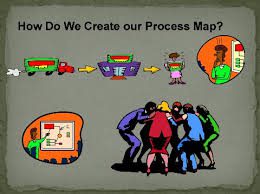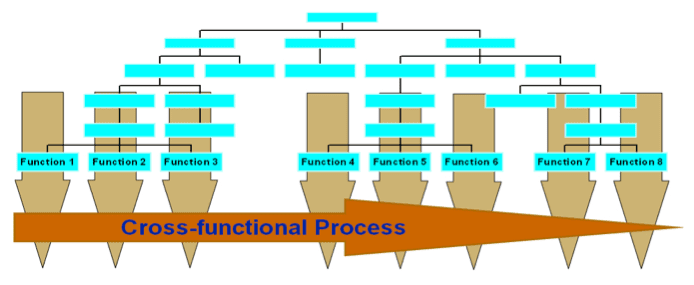Process Mapping: A Strategic Approach for Optimization of Work

The consulting team at focusEDU has the process mapping expertise to assist the leadership of higher education. Can higher education improve admissions, financial aid, registrar and student financial services? When one closely examines how our higher education institutions perform work, the answer is typically “it is the way we have always done it.” Unfortunately, many of these cherished work processes are based on archaic manual systems or on un-integrated legacy student information systems. When we do “automate” our work, we often follow the same legacy work processes. Process analysis for higher education can help improve our work processes and achieve significant productivity and efficiency gains. Process mapping is a primary tool for accomplishing this. This article introduces some key process mapping concepts.
Process Mapping is an important analytical tool for determining how a process works, from start to finish, with the aim of identifying and implementing solutions to improve the efficiency or effectiveness of that process. Process analysis focuses on the flow of work and people through departmental work areas and the value each successive step in the process adds to the final product or service.
Process mapping can be an integral part of process improvement efforts and of business process engineering (BPR) initiatives. Process improvement is appropriate when an institution is seeking relatively minor quality or efficiency improvements; BPR is appropriate when an institution is pursuing more radical improvements.
This document explains an approach developed by the authors at the University of Pittsburgh based on an adaptation of the theory and research of Geary A. Rummler and Alan P. Brache1.
Function vs. Process
Work activities are typically organized around functional units. An institution is thus viewed as a series of specialized vertical organizational structures, each responsible and optimized for a defined set of functions. All work is based upon this set of vertical compartments. For example, in higher education, distinct functional units are responsible for the functions of recruitment, admissions, financial aid, registration, billing, etc.
A process is a series of steps designed to produce a product or service. More precisely, a process is a logical and finite set of observable, interrelated (or hierarchical) work activities utilizing input, that when performed in a pre-defined series, produces output. Processes have internal and external customers and are independent of an organization’s functional boundaries. Output is generated by a transformation of the input(s). The resources available to work activities, and the constraints imposed by mandates (policy, laws, and regulations), limit and influence the work activities.
All of the steps in a process may be contained within one functional area (e.g. billing) but most processes are cross-functional, spanning the white spaces between the boxes on an organization chart (e.g. the optimization of net tuition revenues or the retention of student processes).
Cross-Functional Process
Process Mapping for Higher Education
A process map is a graphical illustration of the individual steps involved in a business process, depicting the order and relationships between process steps as well as the responsible process participants. The decision to initiate process analysis is usually the result of an investigation that identifies a specific product or service that is not being provided as well as expected, or that identifies an organization-wide productivity or performance problem arising from a specific process.
Process mapping is typically implemented through multiple, facilitated sessions with a group of individuals who understand and participate in the process. The facilitator works with the group to create a “map” of the process that illustrates the sequence and description of each step in the process and identifies the things that may go wrong at each step throughout the process. Finally, solutions are developed and implemented that will eliminate the problems and improve the process. In the case of business process reengineering efforts, the original process may be completely abandoned and replaced with an entirely new process.
The participants in a process mapping session should include:
- Process Sponsor: The process sponsor is the person who created the opportunity to investigate and improve the process. For example, the Chief Financial Officer might sponsor procurement process analysis.
- Process Owner: The process owner is typically the principal stakeholder in the process. For example, the director of purchasing might be the most appropriate process owner of a procurement process mapping session.
- Process Mappers: The process mappers are a cross-functional team that includes representatives of all of the major process activities. For example, a procurement process mapping session should include end users (faculty, staff, students, and administrators), buyers, approvers, receivers, vendors, and staff from accounts payable, accounts receivable, purchasing, and internal audit.
- Coordinator: The process coordinator is a process mapper who agrees to take on designated coordinator responsibilities, such as scheduling mapping sessions, arranging session logistics, and documenting the process maps.
- Facilitator: The facilitator assists the process mapping team in creating the map, identifying disconnects and creating and implementing solutions. The facilitator keeps the team on track and moves the conversation in the right direction, cutting short any unproductive discussions and refocusing the team as needed.
The Process of Process Mapping
Some critical steps in the process include:
- Gain Support and Approval: The decision to implement process mapping must be supported by a senior administrator (sponsor) within the organization who is accountable for most, or all, of the steps in the process and who can command the resources needed to complete the project.
- Build the Process Mapping Team: To succeed in process analysis, the project sponsor needs to recruit the “best and brightest” from among the participating functional units. This is challenging because these are typically the very people who are most needed to support day-to-day activities within the functional unit and can least afford to be away from their normal duties for prolonged periods.
- Map the Current Process: The primary purpose of process mapping is to clearly document the steps of a given process. An important component of this purpose is to gain consensus on a shared understanding of the current process as it is actually practiced.
- Identify Disconnects: The mapping effort should identify the things that could go wrong at each step in the mapped process. These “things that go wrong” are called “disconnects.” Examples of disconnects include “the form is lost,” “our customer receives inaccurate information,” or “an unnecessary signature is required, delaying the process”.
- Analyze Disconnects: The identified disconnects should be analyzed for trends, commonalities, and completeness. It is also useful to prioritize disconnects through a discussion of the impact and effort to fix each disconnect.
- Identify Solutions: The process mapping team next generates solutions to address the problems identified with the existing process. This stage is characterized by the need to be creative and to entertain solutions that may be considered “out of the box.”
- Map the Envisioned Process: With a firm understanding of the existing process, its disconnects, and potential solutions, the mapping team can proceed to map a new envisioned process that addresses the disconnects and improves or reinvents the process.
Process mapping is an effective tool in improving or reinventing business processes. The consulting team at focusEDU has the process mapping expertise to assist the leadership of higher education. Good software process mapping similar to Lucidchart can be of value to your process mapping team.
1This work draws heavily from, and is indebted to, the work of Kathleen G. Shade, James G. Williams, Maureen Moroney Beal, and Michael S. Rissman.



Leave A Comment
You must be logged in to post a comment.